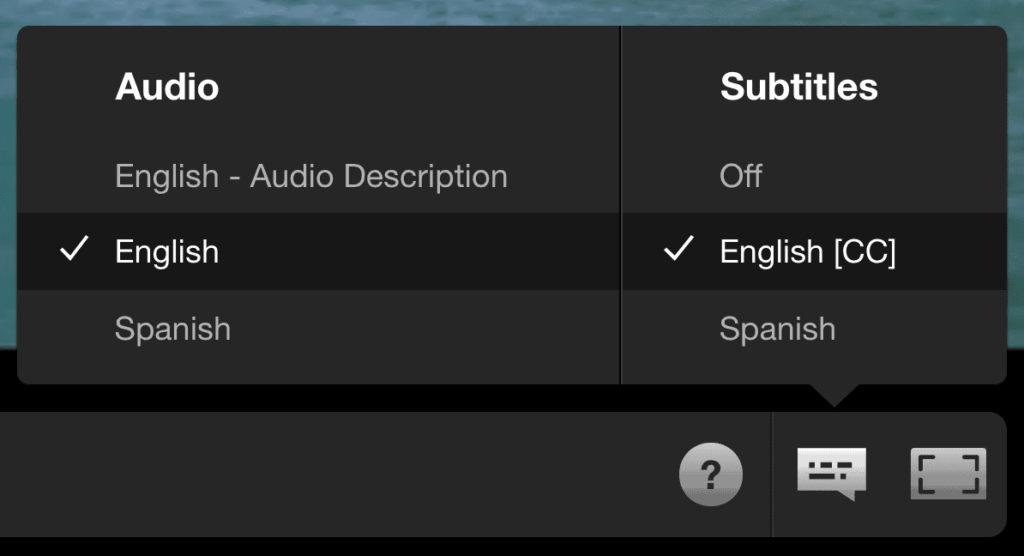As we become more and more aware of the need for accessibility options in media, understanding the differences between English and English CC can be a valuable tool. English refers to the standard version of the language, while English CC is an acronym for Closed Captioning.
Closed Captioning is a form of media access that allows deaf and hard-of-hearing people to experience videos through text. It provides a text description of what they would otherwise be hearing in the audio, including background sounds and speaker changes. This makes it easier for those with hearing impairments to access video content.
In contrast, subtitles assume that viewers can hear the audio but stil need the dialogue provided in text form. Subtitles are used to provide translations for those who do not understand the language being spoken in a video, or who may have difficulty following along with the dialogue. They do not include background sounds or notifications for speaker changes, since these are assumed to be heard by viewers.
The “English [CC]” translation option is meant as an accessibility tool specifically designed for deaf and hard-of-hearing viewers who wish to experience videos in their native language. Meanwhile, subtitles that are translated from Korean into English can be much more accurate than closed captioning when it comes to conveying the original text accurately.
Overall, understanding how each type of translation works is key to making sure everyone has access to media content regardless of their ability level or preferred language. By taking into account both closed captioning and subtitles when providing translations, we can ensure that everyone has equal access to information regardless of their hearing abilities or language background.
Which Subtitle Is Better: English or English CC?
It is difficult to say which subtitle is “better” btween English subtitles and English closed captioning, as they serve different purposes. English subtitles are ideal for scenarios in which the audio is audible but an audience needs the dialogue provided in text form. On the other hand, closed captions are designed for scenarios in which an audience cannot hear the audio and requires a text description of what they would otherwise be hearing. Therefore, while it may be possible to evaluate English subtitles and English closed captions based on certain criteria such as accuracy or readability, it ultimately depends on what type of media you are trying to subtitle or caption.

What Does ‘CC’ Mean in English?
In English, “CC” stands for “carbon copy”. It is typically written at the end of a letter, email, or other document and is followed by the name or email address of someone who will receive a copy of the document. The purpose of “CC” is to ensure that the recipient is aware that others have also been sent a copy of the same document.
Which Language is Better for Watching Korean Shows: English or English CC?
The answer to this question depends on the individual. Some people may prefer the English CC option, as it provides an accessibility option for those who are hard of hearing or have difficulty understanding English. Others may prefer the English subtitles for a more accurate translation of the Korean dialogue. Ultimately, it is up to the viewer to decide which option works best for them.
Difference Between English Subtitles and English Captions
The main difference between subtitles and closed captions is that subtitles assume the viewer can hear the audio, while closed captions provide an additional layer of information to help those who are deaf or hard-of-hearing. Subtitles only include dialog and on-screen text and do not include background sounds or speaker changes. Closed captions, on the other hand, include all of this additional information so that the viewer can fully understand the video.
The Benefits of Using the Best Subtitle Style
The best subtitle style for videos depends on the type of video and the audience it is intended for. Generally, you should choose a font that is easily legible, even at small sizes, as subtitles are typically displayed along the bottom of a video. The font size should also be large enough to be read comfortably. Popular font choices for subtitles include Arial, Lucida Grande, Futura, Tahoma, Impact, Georgia, Verdana and Times. For videos with a more stylized look, you can use more decorative fonts like Copperplate or Lobster. Depending on the mood or tone of your video, you may also want to consider usig bold or italicized fonts to make your subtitles stand out.

Changing the Language of a Credit Card
To change the captioning of a video to English, start by pausing the video you’re playing. Then, tap on Captions and select the language you want the captions in (in this case, English). Next, select Caption style and customize the font and its appearance to your preference. Finally, save your changes and resume playback.
What Does CC Stand For?
CC stands for “carbon copy” and is an email sending term that refers to the days before internet and email when carbon paper was used to make copies of letters. When sending an email, using the CC option allows you to create a copy of the message that you are sending and it will be sent to all recipients listed in the CC field. This allows multiple people to receive the same email at once, which can save time when communicating with multiple people.
What Does ‘CC’ Stand For?
The term “CC” stands for “Carbon Copy,” and dates back to the days of manual typewriters. Carbon paper was used to make copies of documents by pressing pigment onto an additional sheet of paper underneath. It was commonly used in business correspondence, and so it was necessary to indicate which recipients should receive a carbon copy. That is why the abbreviation “CC” is still used today – it’s a reminder of how things were done in the past!
Comparing J Drama and K Drama
The answer to this question depends on individual preferences. Japanese dramas are generally shorter and more action-packed, while Korean dramas tend to have longer episodes with more filler content. Japanese dramas often take their storylines from mangas, while Korean dramas are beginning to explore other sources for stories. Ultimately, both have their advantages, so it’s hard to say which one is better; it all comes down to which type of drama you prefer and what kind of story you’d like to watch.

Comparing the Popularity of K Drama and C Drama
Korean dramas, or K-dramas, are currently more popular than Chinese dramas, or C-dramas. This is due to a number of factors such as the increased exposure of K-dramas in international markets and the higher production values and quality for these shows. K-dramas have become more well known outside of Korea due to their popularity from shows like Squid Game/My Name/Hellbound/All Of Us Are Dead. Moreover, Korean TV networks ofen invest in better quality equipment and production value for their dramas, which has further made them more attractive to viewers.
However, Chinese dramas are still highly popular among viewers all over the world. Many people adore C-dramas for their unique storylines and distinctive style of storytelling that differs from other forms of entertainment. Additionally, C-dramas are often praised for their special effects, cinematography and acting performances that help add an extra layer of realism to the stories they tell.
The Benefits of Hollywood Over Kdrama
Hollywood is often considered to be better than K-dramas because of its larger budget and expansive production values, allowing for greater creativity and visual effects. Hollywood films often have more well-known actors and higher production values, which can make them more appealing. Additionally, Hollywood films are often more widely distributed around the world, making them more accessible to a global audience. Hollywood also has a longer history of producing quality films, which will likely continue into the future. Finally, Hollywood provides a larger selection of genres and stories to choose from than most K-dramas do.
What Does ‘CC’ Mean in Movies?
CC stands for Closed Captions in movies. It is a system that displays text on the screen with the dialogue and sound effects, allowing viewers who are deaf or hard of hearing to follow along. The captions also assist viewers who don’t understand the language in which the movie is spoken.
The Meaning of CC in Captions
CC stands for Closed Caption. Closed Captions are the most common kind of captions used by major broadcasters and video streaming services like Facebook Live, YouTube and Vimeo. When enabled, closed captions display a text version of the audio track of a video or broadcast, allowing viewers to follow along with both dialog and sound effects. They may be identified by a [CC] symbol in the corner of the screen and are usually provided as a separate file, allowing viewers to switch them on or off whilst watching.

The Benefits of Using English Subtitles
Yes, using English subtitles can be a great way to improve your understanding and appreciation of foreign films. Subtitles help you recognize unfamiliar words and phrases, as well as help to ensure that you understand the context in which they are used. They also provide an opportunity for you to practice your grammar skills, by recognizing the correct use of various tenses, such as past, present, and future. Furthermore, English subtitles can provide a better overall experience when watching foreign films.
Conclusion
In conclusion, English subtitles and closed captions offer different experiences for viewers. Subtitles are best used when the viewer is able to hear the audio and needs text to understand what is being said. Meanwhile, Closed Captions are more inclusive of those who may be deaf or hard-of-hearing, as they include background sounds and notifications of speaker changes. By providing both subtiles and closed captions, English users are able to experience a variety of media with greater access than ever before.
